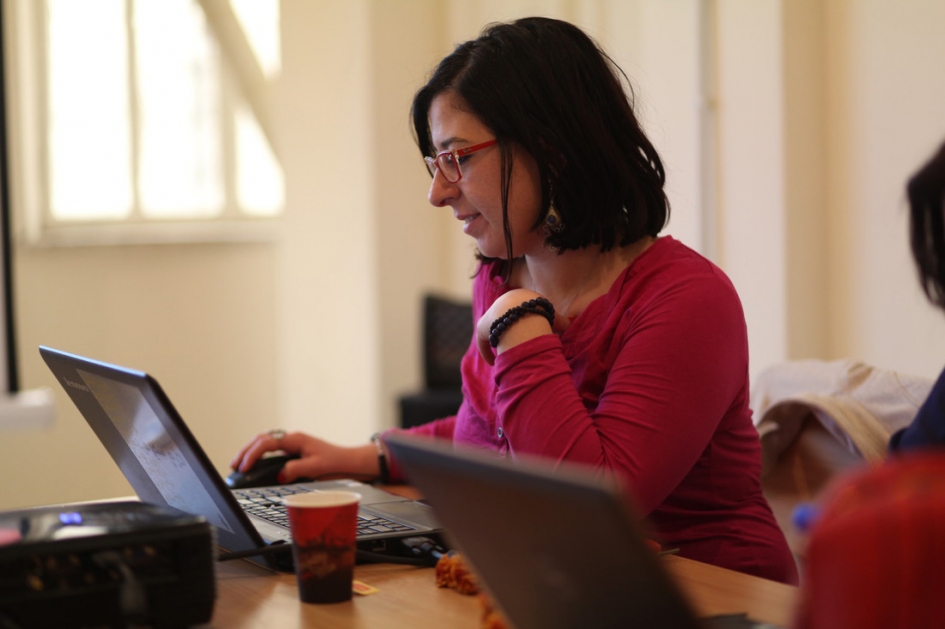
Learn to sort out legitimate news from the false and misleading stories that circulate online. AFSC
Earlier, AFSC brought you four tips for assessing fake news in social media. This is part of our ongoing effort to help our readers develop better media literacy in today’s challenging environment. By now, we have seen many reports about the dramatic impact on the presidential election of fake and misleading news stories circulating online. It appears that millions of people have read and believed articles with no basis in fact whatsoever. We've also seen the president tweet and repeat claims that are unsubstantiated at best–and lies at worst.
To address this big problem, we need our social media platforms to adopt better policies to weed out misleading, false, and dangerous articles, and we need media outlets and journalists to take seriously their duty to be independent, critical voices promoting truth (unfortunately, Facebook has refused to do so in this presidential election year). But you as a reader can play an important role, too.
Being a savvy reader and sharer of media is more important than ever if we are going to advance policies of peace and ensure that our communities are inclusive. Here are some media literacy tips to help ensure you are a sophisticated reader and communicator seeking to cut through the confusion, noise, and falsehoods that have crowded our media landscape.
1.) Read beyond the headline: Headlines often repeat incendiary claims without debunking lies in order to catch your attention.
- Before President Trump took office, he tweeted a blatant falsehood, and what’s worse is that many media outlets tweeted and ran stories about the tweet–without clearly stating that the tweet was untrue. The Wall Street Journal’s headline? “Donald Trump Alleges That ‘Millions of People’ Voted Illegally.” Many other news outlets tweeted or ran headlines about the tweet without noting that it was not only unsubstantiated but an outright falsehood.
- If you clicked through to read the stories, you might have learned that the “evidence” for Trump’s claim came from a random tweet that was previously picked up by a partisan website and spread as fake news earlier this year.
- But many of us stop at the headlines–or we let misleading headlines shape how we understand and remember the story. Learn to read between the lines when a headline catches your attention.
2.) Fact-check your news: Even a source that you trust–a newspaper with an editor, a blog with a clear perspective, or a cable news network–may report false information as fact. Learn to look for the evidence in an article and evaluate how strong it is.
- In the case of the Trump tweet, it is not hard to find the source of his information–a few tweets from a man you’ve never heard of, then repeated and recycled throughout the conspiracy-minded internet. There is no rigorous study–or even anecdotal evidence–to back up the claim.
- But the claim is not only “without evidence” as some media outlets framed it. There is an abundance of research clearly showing that the type of widespread voter fraud that Trump touted in his tweet does not exist. In this case, the proliferation of this story may help efforts to further suppress voting rights – it is downright dangerous. Before you share a story or repeat what it says, spend a moment evaluating the evidence.
3.) Support good journalists and criticize stories that are poorly researched or downright misleading:
- We need journalists to do their jobs and produce accurate, well-supported articles that do not repeat lies and false claims, and that bring light and clarity in the din. A free, independent press is essential to our democracy, especially in difficult times such as these–and especially when false information is spread so freely. So support good journalism and reward it with your eyeballs, clicks, and subscription fees.
- But also, speak up when reporters and editors fail to do their jobs. Write a letter to the editor of newspapers and outlets that use misleading or false headlines, that repeat lies uncritically without providing context and facts, and that provide opportunities for lies to spread. Or use social media to contact editors to express your disappointment. Use your growing media literacy to discern and amplify truths that are backed up by good evidence.
Together we can work to build more solid footing and common ground by reading beyond headlines, fact-checking our news, and demanding accountability in our media.